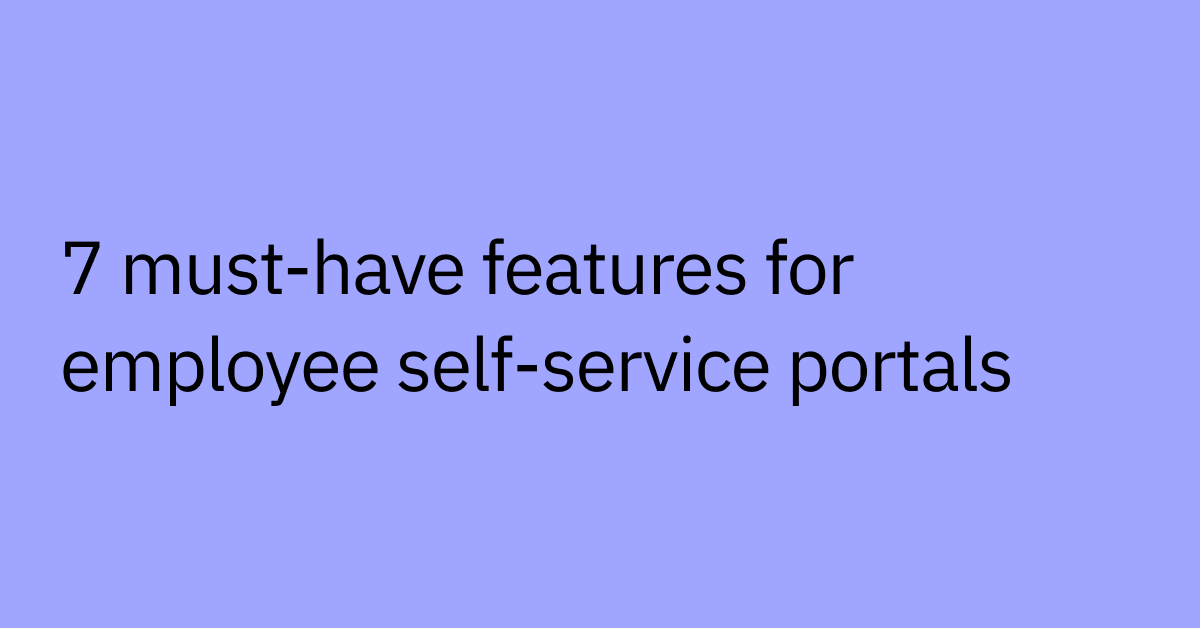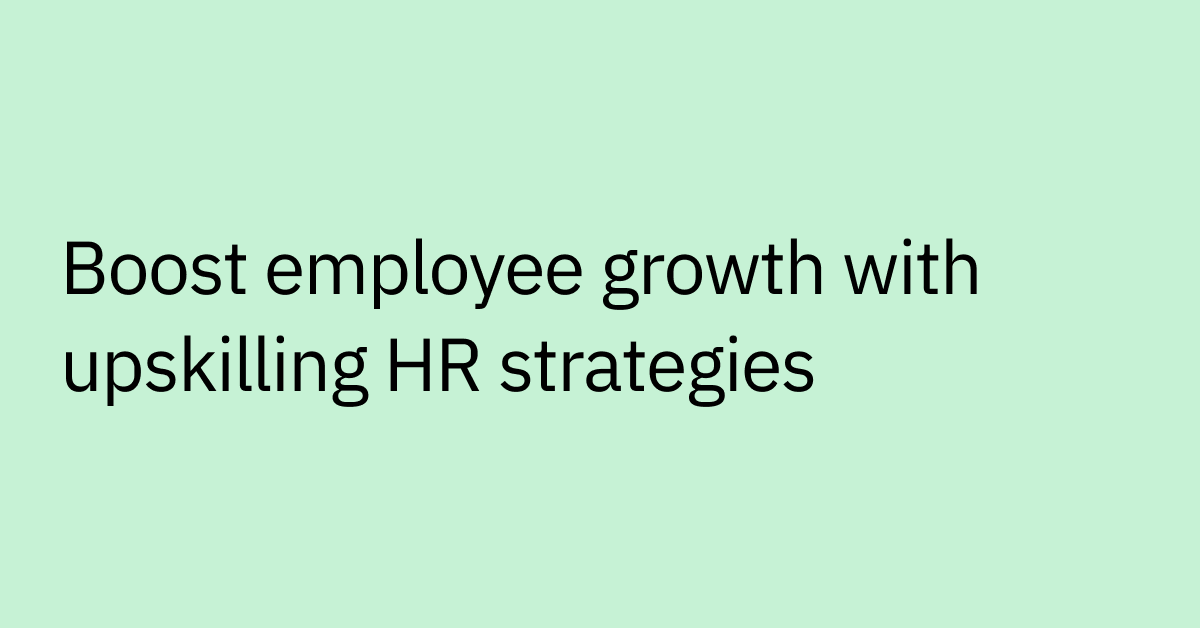Table of contents
Highlights
- Robotic process automation (RPA) automates repetitive, rule-based tasks, while enterprise automation orchestrates intelligent, end-to-end workflows.
- RPA delivers quick wins but enterprise automation enables long-term digital transformation at scale.
- The key difference between ‘enterprise automation’ and ‘RPA’ is one of scope and scale. Think of RPA as a single tool, while enterprise automation is the entire toolbox—and the overall strategy for using it.
- The two approaches work well together. RPA is a component of a much larger enterprise automation strategy. RPA handles granular tasks, while enterprise automation provides context and orchestration.
- Enterprise automation brings major benefits like scalability, proactive operations, and improved employee experience, but requires investment and governance.
- Choose RPA for structured, predictable tasks and enterprise automation for complex, cross-functional workflows—together they form a complete automation strategy.
Picture this: a global bank bets big on automation. Its IT department runs a pilot, launching dozens of bots to handle routine work such as password resets, ticket routing, and access requests.
At first, it feels like magic—tickets vanish, workflows hum. Then reality hits. One bot crashes, another misses an update, and suddenly the patchwork shows its seams. What looked like transformation turns out to be a maze of fragile quick fixes.
That’s the risk with robotic process automation (RPA). It may look promising in the beginning, but at scale it may collapse under its own weight.
But there’s an alternative: enterprise automation. Built for the long game, enterprise automation connects people, processes, and systems across the business—not just one-off tasks.
If you’re leading digital transformation in your organization, it’s critical to understand the potential pitfalls that frequently derail automation projects. Read on to learn why the gap between RPA and enterprise automation is bigger than it may seem.
What is enterprise automation?
Enterprise automation is the use of technology to automate and streamline business processes across an organization. It integrates with various enterprise systems to enable tasks such as workflow automation, data processing, and operational efficiency improvements.
Instead of focusing on small, isolated tasks, it looks at the bigger picture (how your business runs end to end) and finds smarter ways to streamline it.
At its core, enterprise automation is about scale. It typically combines software, (AI), and (ML) to handle complex workflows across systems and reduce manual effort. These tasks include automating routine and repetitive tasks, such as predictive analytics:, data processing or chatbots.
While standard AI provides the "brain" and RPA provides the "hands," Agentic AI acts as the conductor or orchestrator of the entire process. Agentic AI can plan, reason, and act.
Think of it as a hierarchy:
- RPA Bots (The Hands): They are the executors. They are given a strict, pre-programmed script to follow, like "go to this website, click here, and enter this data." They are excellent at what they do, but they are rigid and unintelligent.
- Standard AI (The Brain): These are the intelligent components that can perform a single, complex, and data-driven task. For example, an NLP model can read and understand the contents of an email, or a computer vision model can extract data from an unstructured invoice.
- Agentic AI (The Conductor): This is the top layer. You give the agentic AI a high-level goal, not a step-by-step process. The agent then dynamically reasons, plans, and orchestrates the actions of the other components (RPA bots, standard AI models, and APIs) to achieve that goal.
For example, an organization might use enterprise automation to automatically route IT tickets to the right resolver group, process expense reports across finance systems, or provision new-hire accounts in multiple applications at once.
These modern systems are designed to interpret intent, orchestrate multi-step processes, and solve issues with little to no human input. For your teams, this means less time spent on redundant work and more time focusing on strategic projects that move the business forward.
Key capabilities and technologies
Enterprise automation relies on advanced AI and integrations that make it possible to manage complex processes across the business. Natural language understanding (NLU): Interprets requests written in plain language. For example, if an employee types “I need access to Salesforce,” the system understands the intent and delivers the correct response.
- ML: Learns from past interactions and adapts over time, which improves accuracy. Think of it as recognizing common IT issues and resolving them faster with each case—a key advantage for automation in IT service management (ITSM).
- Workflow orchestration: Coordinates multiple steps across different systems. A typical case might be routing a helpdesk ticket to the right support team while updating CRM records.
- Integration frameworks: Connects core enterprise platforms like ServiceNow, Workday, or SAP without requiring extensive custom coding. This ensures information flows seamlessly between tools.
- AI agents: AI agents connect to enterprise systems and take action across them, making automation feel seamless for employees. They use advanced language models to handle everyday tasks—like answering knowledge questions, pulling details from tickets, or executing actions directly in tools.
Benefits of enterprise automation
The real value of enterprise automation comes from its ability to manage complexity. Unlike traditional automation, which often focuses on repetitive, rule-based tasks, enterprise automation can handle cross-functional workflows that touch multiple teams and systems.
This comes with some significant benefits:
- Automates multi-step, cross-functional workflows, like employee onboarding across HR, IT, and facilities
- Reduces manual workloads and bottlenecks, freeing teams to focus on strategic tasks
- Scales across departments, supporting IT, HR, finance, and more with a single platform
- Enhances employee experience by delivering faster, consistent service, like instant IT support
- Enables proactive responses, such as predicting system issues before they disrupt operations
Limitations and considerations
As powerful as enterprise automation is, it can come with a few challenges:
- Upfront investment: Implementing automation at scale often requires significant time, money, and resources before the benefits start to show.
- Change management: Employees may hesitate or resist new systems, so clear communication and training are critical to adoption.
- Integration complexity: Even with strong frameworks, connecting older legacy systems can be tricky and may demand custom work.
- Maintenance needs: Automation tools aren’t “set it and forget it.” They require ongoing monitoring, updates, and tuning to stay effective.
- Data security and compliance: Automating sensitive processes brings added responsibility for ensuring security, privacy, and regulatory alignment.
How enterprise automation adds context, orchestration to RPA
RPA tools excel at handling individual, rule-based tasks, such as copying data between systems or filling out digital forms. But on its own, RPA has some important limitations. It's not set up to adapt to context, handle exceptions well, or scale beyond repetitive, predefined actions.
RPA is a key element of enterprise automation strategy. RPA is the doer or the ‘hands’ and manages granular tasks, while enterprise automation uses AI to provide the ‘thinking’ context, and orchestration.
Enterprise automation solutions build on RPA by layering intelligence and orchestration on top of those task-level bots.
It uses agentic AI to interpret context, decide when bots should be triggered, and manage exceptions that would normally stall an RPA workflow. Just as importantly, it connects bots to create end-to-end processes that span multiple departments and systems.
For example, whereas an RPA bot can extract invoice data, its capabilities stop there. In contrast, advanced agentic enterprise automation can manage the entire procure-to-pay cycle—validating the invoice, routing it for approval, updating ERP records, and ensuring compliance checks are met.
In this way, the two approaches complement each other. RPA delivers quick wins at the task level, while enterprise automation enables long-term transformation across the organization.
Aspect | RPA | Enterprise Automation |
Scope | Task-based. Routine admin tasks, such as data entry and invoice handling | Process-based. Comprehensive workflows spanning multiple systems |
Technology | Rule-based bots/ RPA software | AI, ML, and NLU for context-aware orchestration |
Flexibility | Rigid, script-based—struggles with change | Adaptive—learns from data and user interactions |
Scalability | Limited to specific tasks, so it’s hard to scale across departments/systems | Scales across IT, HR, and finance with integrated workflows |
Resilience | Fragile—breaks with UI or process changes | Robust—adapts to system updates and dynamic needs |
Intelligence | Limited. Follows predefined rules; no contextual understanding | Cognitive and intelligent. Can handle unstructured data make decisions autonomously, and learn over time |
Maintenance | Requires manual updates for bot scripts. Managing hundreds of individual bots can become complex. | Dynamic orchestration reduces maintenance needs |
Business impact | Short-term efficiency for specific tasks | Long-term transformation across the enterprise |
What is robotic process automation (RPA)?
RPA is often described as the “hands” of automation. It uses software robots (“bots”) to handle tasks that follow a set of predefined steps, but doesn’t require human judgment, such as typing information into a form, copying data from one system into another, or generating the same report every week.
These RPA bots can mimic human actions on a computer screen by clicking, copying, pasting, and filling out fields just as a person would. This makes them especially useful for back-office processes where systems lack APIs or when building them is too costly.
Common RPA use cases
RPA shines in business processes requiring consistent, structured inputs:
- Invoice processing: Extracting data from invoices and updating ERP systems
- Data entry: Transferring customer details from emails to a CRM
- Form processing: Automating claims or onboarding forms for HR or insurance
- Payroll and HR operations: Calculating and distributing payroll data
- Recurring reports: Generating weekly sales reports from multiple systems
Types of RPA
RPA isn’t one-size-fits-all. Bots can be deployed in different ways, depending on the process, the people involved, and the complexity of the work. The main approaches include:
- Attended RPA: Bots that work alongside humans, triggered on demand
Example: A customer service agent launches a bot during a call to instantly pull a customer’s billing history instead of searching manually.
- Unattended RPA: These bots work independently in the background, requiring no human intervention once deployed
Example: A bot automatically processes thousands of invoices overnight, matching purchase orders with receipts.
- Hybrid RPA: A mix of both, where bots can run unattended but still allow human intervention when needed
Example: In an insurance claim process, an attended bot helps a claims adjuster collect supporting documents, while an unattended bot later verifies policy details and processes the payout.
- Simple scripts vs. advanced workflows: Simple scripts handle basic tasks (e.g., copying data), while advanced workflows manage multi-step processes (e.g., validating and logging data across systems)
Example: A simple script might move data from an Excel sheet into a CRM system, while a more advanced workflow might handle employee onboarding, from creating system credentials to scheduling training modules.
This variety makes RPA flexible, but choosing the right type is also key to getting value.
How RPA works
The process of setting up RPA usually follows a clear path:
Identify simple but time-consuming tasks: Look for high-volume, rule-based tasks, like data entry or report generation.
Configure bots: Use RPA platforms to map out each action—clicks, keystrokes, or form fills.
Execute actions: Once built, bots carry out the process exactly as defined.
Monitor and report: Most RPA platforms include dashboards to track bot activity and results and ensure reliability.
It’s like teaching a digital worker how to follow instructions and then letting it run those instructions endlessly.
Benefits of RPA
Organizations are drawn to RPA because it delivers quick, tangible results:
- Faster processing with fewer human errors
- Cost savings of up to 30% and improved operational efficiency
- Non-invasive implementation since it works on the UI
- Around-the-clock availability
These advantages make RPA especially appealing for businesses looking to streamline processes without a major IT overhaul.
Limitations of RPA
RPA isn’t a silver bullet. Its limitations include:
- Bots are fragile and can break if the user interface of an application changes (like a software update that alters a form’s layout)
- It struggles with unstructured or unpredictable tasks, like free-form emails
- Lacks adaptability or contextual understanding (no real “intelligence”)
- Difficult to scale meaningfully across departments without significant oversight
In short, RPA is great for discrete, repetitive tasks. But when businesses want automation that’s smarter, more flexible, and truly enterprise-wide, they often need to pair RPA with other technologies like AI and workflow automation platforms.
Where RPA fits in enterprise automation
RPA excels at automating administrative work like invoice processing or data entry, and acts as a building block within broader enterprise automation strategies. It’s particularly useful for legacy systems lacking APIs, allowing automation without costly integrations.
RPA complements technologies like business process management (BPM) for process coordination, integration platform as a service (iPaaS) for system connectivity, and AI-driven tools for decision-making.
Together, they form a layered automation stack, with RPA handling granular tasks and enterprise automation orchestrating complex workflows.
RPA vs. enterprise automation: key differences
RPA focuses on rules-based activities that mimic human interactions, while enterprise automation AI tools orchestrate complex workflows across systems.
From a technology perspective, RPA relies on rule-based bots that can be fragile when processes or interfaces change. Enterprise automation, in contrast, uses AI-powered orchestration and integration platforms designed for adaptability and scale.
This difference extends into resilience: Bots may require frequent updates, while enterprise automation platforms dynamically adapt as processes evolve.
Flexibility and intelligence also set them apart. RPA works best with structured data and predefined triggers. Enterprise automation applies contextual awareness, AI, and decision-making capabilities to manage exceptions and optimize processes continuously.
When to use RPA vs. enterprise automation
Choosing between RPA and enterprise automation depends on your needs. Each excels in specific scenarios, and understanding their strengths helps you make informed decisions.
When to use RPA
RPA is ideal for predictable, rule-based tasks with structured inputs. It works well for routine processes that don’t require complex decision-making. Use cases include:
- Extracting invoice data and entering it into an ERP system
- Copying information between spreadsheets and internal systems
- Automatically generating recurring reports
Real-world example: A mid-sized retailer uses RPA bots to transfer daily sales data from its point-of-sale system into its accounting platform. This automation saves hours of manual data entry each week and reduces reporting errors.
RPA delivers fast, task-level efficiency, especially for legacy systems or short-term automation needs.
When to use enterprise automation
Enterprise automation is better suited for dynamic, multi-step workflows that span departments, systems, and channels. It goes beyond task execution, coordinating processes that may involve unstructured data, user intent, or AI-driven decision-making.
Real-world example: A global bank uses enterprise automation to manage its customer onboarding process. The system orchestrates identity verification, credit checks, document collection, and account setup across multiple departments and platforms.
Layering AI with workflow automation helps the bank reduce onboarding time from weeks to days while ensuring compliance.
Get intelligent automation at scale with Moveworks
While RPA is powerful for automating repetitive tasks, it was never designed to deliver the adaptability and scale enterprises need. Enterprise automation extends that foundation by adding context, reasoning, and AI-driven orchestration to create resilient, end-to-end workflows across the business.
Moveworks enables this shift by connecting seamlessly with enterprise systems, interpreting user intent with advanced AI, and resolving requests across tools without manual intervention. This approach delivers intelligent automation at scale, addressing IT, HR, and other critical functions with real impact. For example:
- IT support resolution: For a web design company, the Moveworks AI Assistant handled half of IT issues—work equivalent to three full-time employees—while maintaining a consistent 90+ NPS. This freed the IT team to focus on complex initiatives and set a new benchmark for employee satisfaction.
- Employee onboarding: Moveworks automated account access and provisioning tasks for new hires at a leading enterprise software company. Fifty-two percent of account unlocks were resolved autonomously, giving employees immediate access to the tools they needed on day one.
Explore the Moveworks platform and learn how to move beyond the limits of RPA and achieve intelligent automation at scale.
Frequently Asked Questions
Yes. RPA is especially useful for bridging gaps in older systems that lack APIs, while enterprise automation platforms often provide integration frameworks or iPaaS connectors. Combining the two allows businesses to modernize workflows without a full system overhaul.
Enterprise automation typically helps employees shift their focus from redundant manual work to higher-value, strategic initiatives. When paired with effective change management, it can boost job satisfaction by reducing burnout and enabling more meaningful contributions.
RPA ROI is often measured in cost and time savings for specific tasks, like reducing manual hours or eliminating errors. Enterprise automation ROI extends to broader metrics such as improved employee experience, faster time-to-market, compliance improvements, and scalability across business units.
Agentic AI expands enterprise automation by going beyond simple task execution. It reasons through unstructured inputs and dynamically orchestrates multi-step workflows across systems. For example, it can plan how to fulfill a complex HR request, summarize and route long policy documents to the right approvers, or adapt IT workflows on the fly—all with minimal human intervention.
It depends on business priorities. If your organization wants to see immediate gains and has many repetitive, rules-based processes, RPA is a good entry point. But if the goal is long-term digital transformation, scalability, and intelligent workflows, starting with enterprise automation (or layering it on top of existing RPA) ensures a more future-proof strategy.



